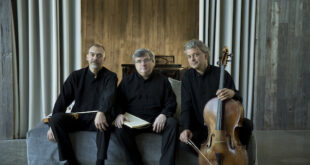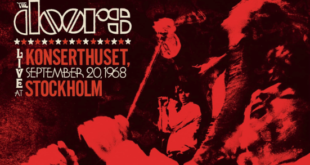The New York Philharmonic’s 2020 Lunar New Year concert wasn’t an all-Chinese affair. But it provided a draught of positivity during a season of international disease fears and creeping xenophobia. The brief program at Lincoln Center’s David Geffen Hall felt more like a big, colorful party than a stereotypically staid classical-music concert.

Conducted by Shanghai Symphony Orchestra principal conductor Long Yu and joined by violinist Gil Shaham and pianist Haochen Zhang, the Philharmonic presented the U.S. premiere of a spectacular new piece by Chinese-American composer Zhou Tian; Chen Gang and He Zhanhao’s 1950s violin concerto “The Butterfly Lovers”; the New York premiere of “Spin-Flip” by Korean composer Texu Kim; and, for good measure, an elastic, eye-opening performance of George Gershwin’s “Rhapsody in Blue.”
If it hadn’t been positioned as a curtain-raiser, Zhou’s “Gift” would have been a show-stopper. The orchestra came out with all guns firing in this cinematically exciting piece that punched (to torture a metaphor) well above its eight-minute weight.
A fanfare introduction explodes into jazz-age fireworks, giving way to a short lyrical legato section crowned by a golden French horn melody. Dissonant cross-currents among the strings and winds lead back to a thoughtful echo of the opening fanfare, climaxing with toccata-like thrills.
The piece sustains a concise, beautifully ordered narrative, yet is full of surprises. Long Yu’s tightly focused direction matched Zhou’s mastery of the colors of the orchestra, turning the performance into a triumph of musical universality as well as fine writing.
Based on a folk tale, “The Butterfly Lovers” weaves a spell from lilting pentatonic melodies and bright dances. Traditional Western harmonies underlie “Oriental” modes, as the mood zigzags between high and low spirits to reflect the story’s lovers’ oscillation towards their fate. The orchestra formed a taut canvas for the violin.
The music flowed with exposed violin passages, dance sequences (one of them polka-like), mournful romances, excited dialogues between soloist and orchestra, plaintive statements from the woodwinds, and violin-cello counterpoint. Shaham’s coppery, liquid tone and sparkling showmanship perfectly suited the concerto’s suggestive storytelling and the concert’s overall festive feeling.

With its seemingly disjointed percussiveness, polyrhythms, and echoing effects, Texu Kim’s “Spin-Flip” could test any orchestra’s cohesiveness and precision. While there needn’t have been any doubt as to the Philharmonic being up to the task, successful expression of the piece’s fusion of half-cartoonish humor and Mahlerian surprises wasn’t a given. In the event, the music had me smiling and even laughing.
The globe-spanning program circled back home to end with “Rhapsody in Blue.” In only his second concert performance of the classic, Haochen Zhang displayed a touch deftly lyrical, though now and then rushed (from overexcitement, perhaps?). The conductor’s fluid tempos aligned with the pianist’s daring rubatos, and a carnivalesque energy dominated. Haochen impressed with flavorsome agility in the solo passages, nimbly managed the repeated-note section, and, along with the orchestra, kept just shy of parody.
The fact is, Gershwin’s masterpiece can handle some excess. And it was a perfect occasion, as well as the perfect piece, for pushing boundaries. Even in a week of quarantines, border walls can fall, artistically as well as literally. Happy Year of the Rat!
 Blogcritics The critical lens on today's culture & entertainment
Blogcritics The critical lens on today's culture & entertainment




